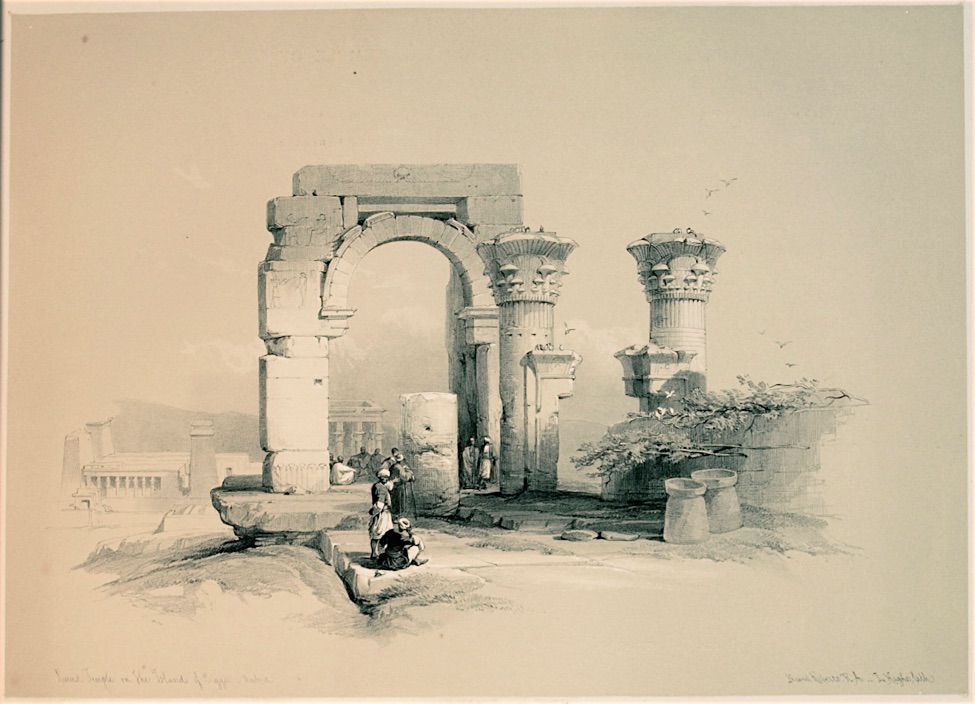PART OF THE RUINS OF A TEMPLE ON THE ISLAND OF BIGGE, NUBIA.
THIS Temple is situated on an island close to that of Philæ; owing to its greater elevation, it overlooks that island and the Nile, and one of the finest points of view of the temples of Philæ, from Biggè, is a scene which has already been given in this Work. Wilkinson considers that the Temple of Biggè is of great antiquity, from some granite remains and the inscriptions which they bear. The columns, however, which are seen in this sketch as part of the grand entrance, are evidently Ptolemaic, and have formed a portion of a previous portico. In advance of these, ascending from the river, once stood the flanking towers of the propylon, which commanded the outer court or dromos, of which that which now surrounds the arch was a portion; this may be traced by the sculpture which still exists. The arch is an addition of a later period; Wilkinson says, of the Christian era: it presents a singularly incongruous appearance in the midst of Egyptian architecture. The ruins are surrounded by a miserably mudbuilt Arab village. The Temple of Biggè from its elevated situation, to which the approach was by a flight of steps, must have exhibited a noble appearance and produced a very striking effect. The present Temple appears to have been commenced by Euergetes I., and was dedicated by him to Athor; it was completed by the Cæsars: but Wilkinson conjectures, from a red granite statue found there, that an edifice existed on Biggè as told as Thothmes III. or Amunoph II., and that Biggè is the Abaton of Seneca, in spite of the doubts expressed by other Egyptian antiquaries.


